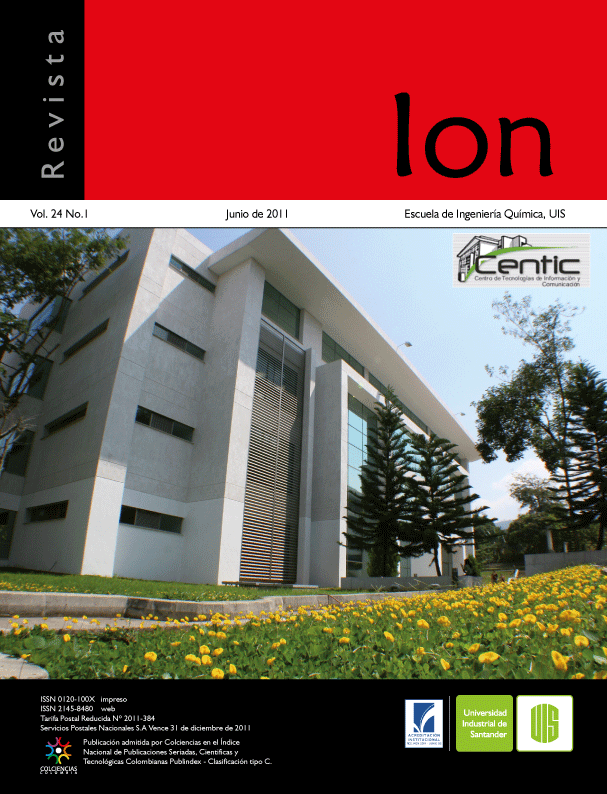EFECTO DE LA PRESENCIA DE CLORO EN CATALIZADORES Pd/γ-Al2O3 SOBRE LA REACCIÓN DE HIDRODESULFURACIÓN DE DIBENZOTIOFENO
How to Cite
Abstract
Resumen
En este trabajo se estudió la influencia de la presencia del cloro en catalizadores Pd/γ-Al2O3, buscando entender la razón de la mejora en la actividad observada en la reacción de hidrodesulfuración (HDS) del dibenzotiofeno (DBT), cuando estos catalizadores se preparan con precursores clorados comparados con otros preparados con precursores orgánicos como acetilacetonatos. Para lograr este objetivo, se analizó el efecto de la incorporación del Cl antes y después de la sal de Pd y el efecto del cambio de las temperaturas de calcinación y de reducción de los catalizadores. Las propiedades ácido-base del catalizador fueron determinadas utilizando el método de distribución de afinidad de protones, lo cual permitió correlacionar la naturaleza y concentración de los diferentes sitios OH presentes en la superficie del catalizador con el comportamiento catalítico. Los resultados mostraron que la presencia de Cl en el catalizador genera cambios en las propiedades ácidas del soporte, creando posiblemente nuevos sitios ácidos Brönsted, lo cual tiene un efecto positivo en la HDS del DBT. Además se observó un aumento importante en la selectividad hacia la ruta de hidrogenación, cuando los catalizadores que contienen cloro son activados a baja temperatura (473 K).
Palabras Clave: orden de impregnación, temperatura de calcinación, temperatura de reducción, hidrogenación
Abstract
In this work, the influence of chlorine in Pd/γ-Al2O3 catalysts was studied, in order to understand the reason of the improvement in the conversion observed in the hydrodesulfurization (HDS) of dibenzotiophene (DBT), when these catalysts are prepared from chlorided precursors compared to those prepared from acetylacetonates. In order to achieve this objective, the effect of the incorporation of Cl before and after the Pd salt, and the effect of changing catalysts calcinations and reduction temperatures was analyzed. The acid-base properties of the catalyst were determined using the Proton Affinity Distribution method, which allowed correlating the nature and concentration of the different OH sites present in the catalyst’s surface with the catalytic behavior. The results showed that the presence of Cl in the catalyst generates changes in the acid properties of the support, possibly creating new acid Brönsted sites, presenting a positive effect in the HDS of the DBT. It was also was observed a very important increase in the selectivity to HYD when the catalysts containing chlorine were activated at low temperature (473 K).
Keywords: impregnation order, reduction temperature, calcination temperature, hydrogenation

